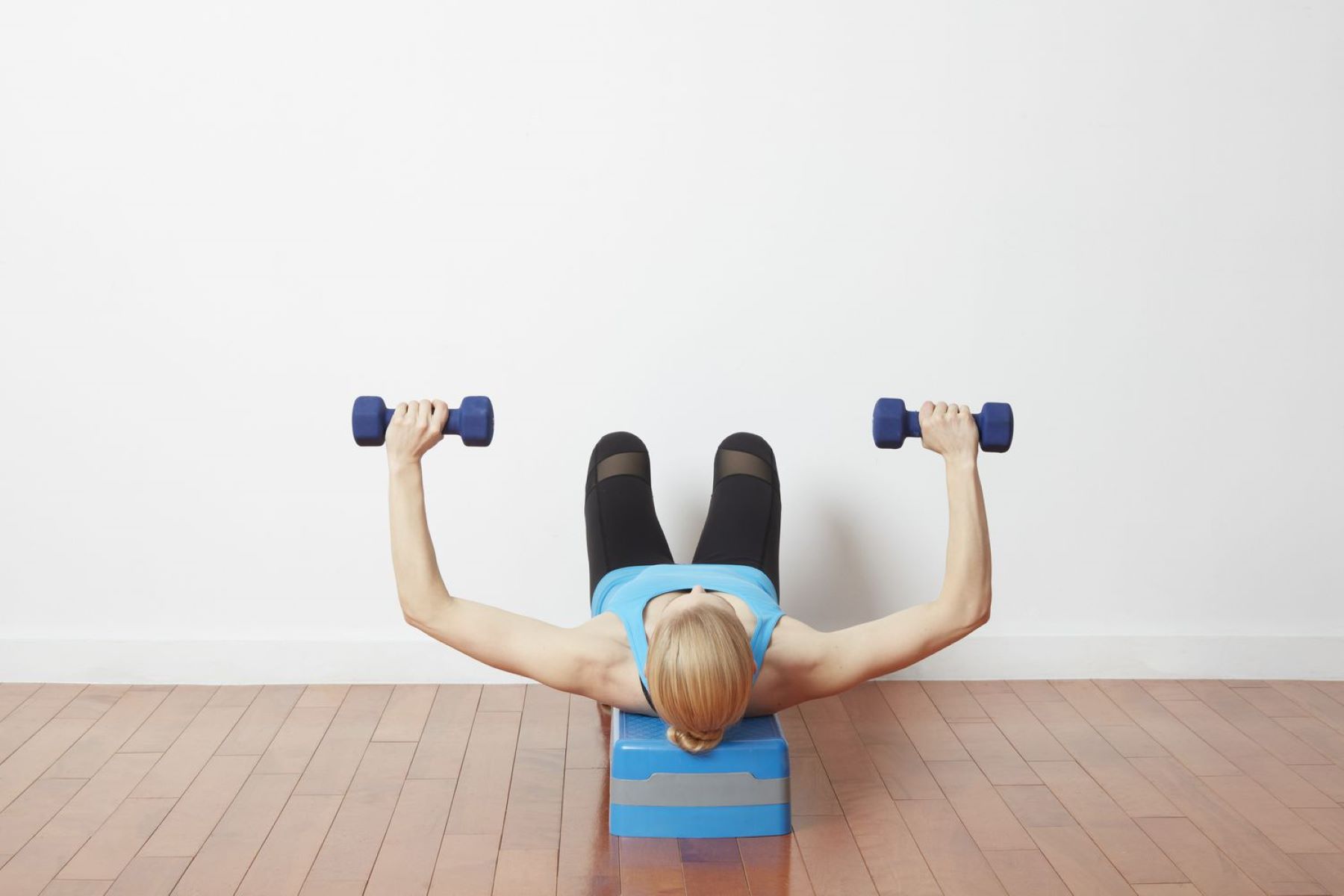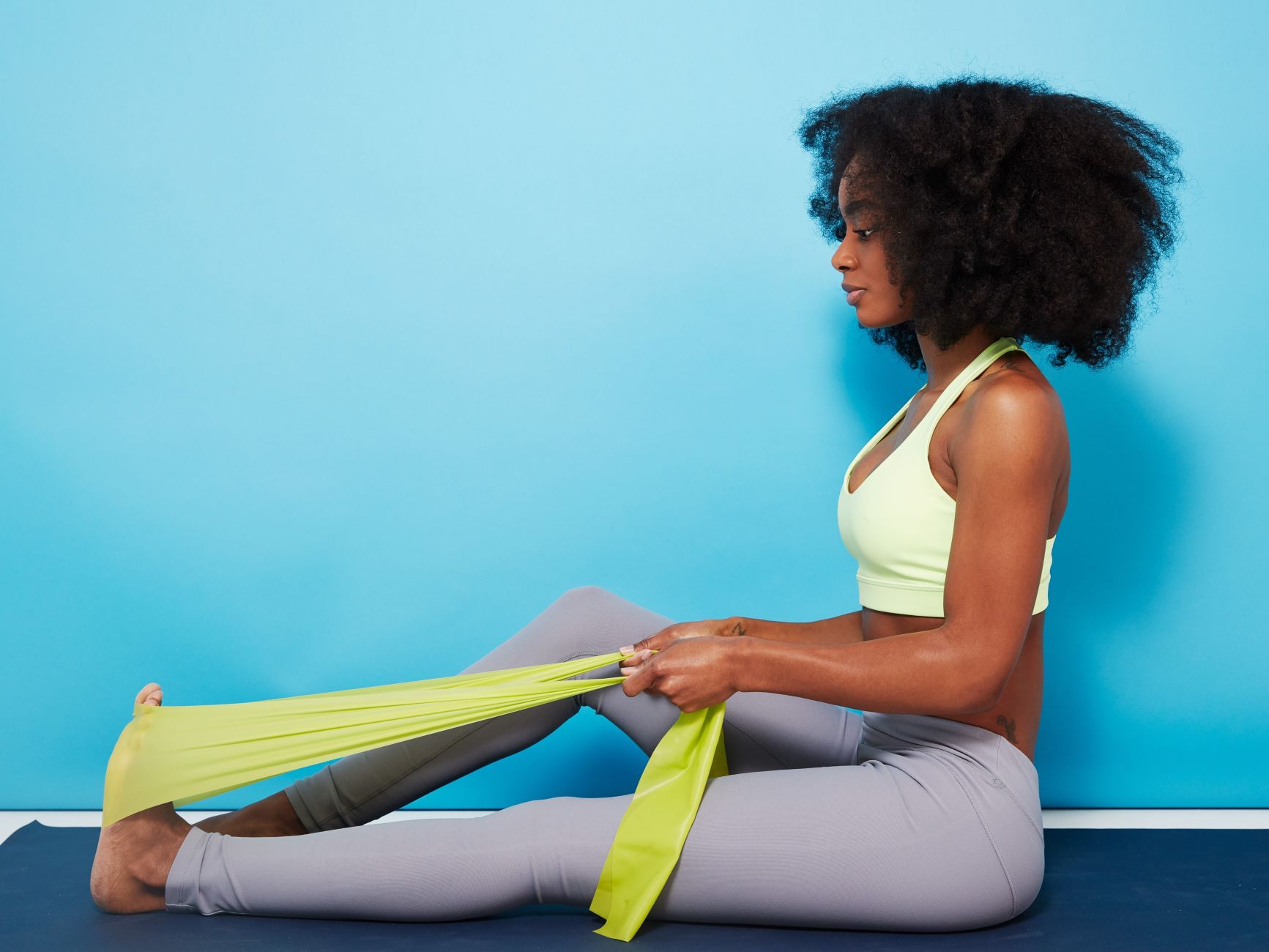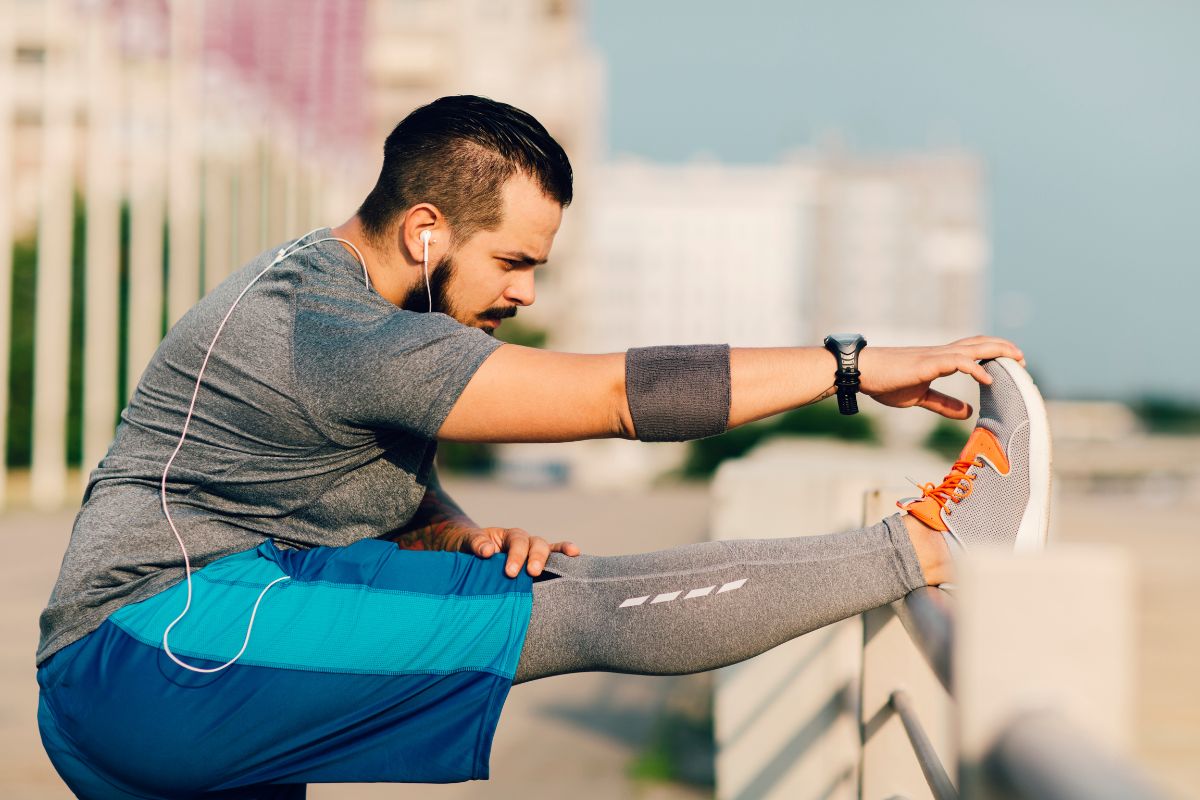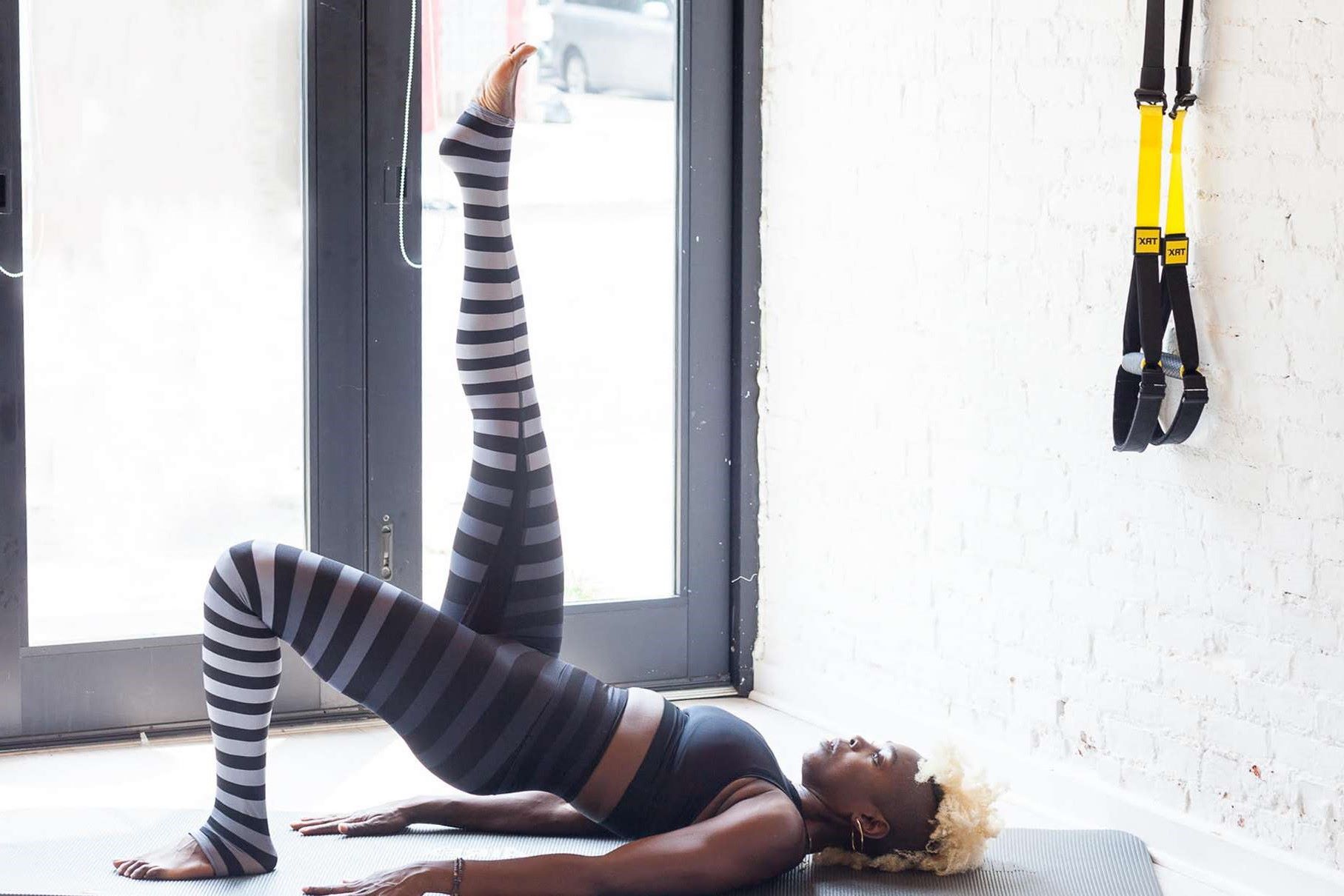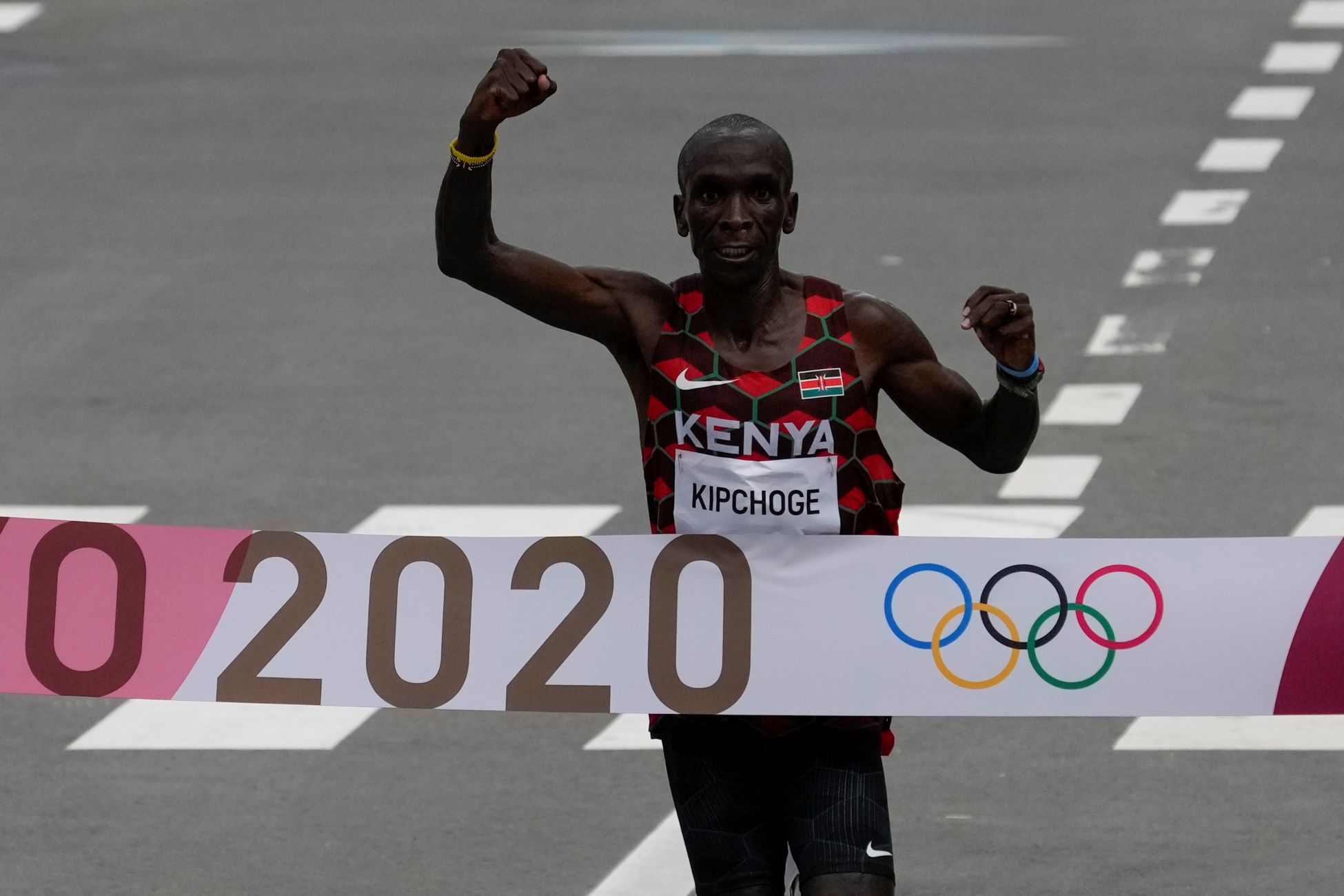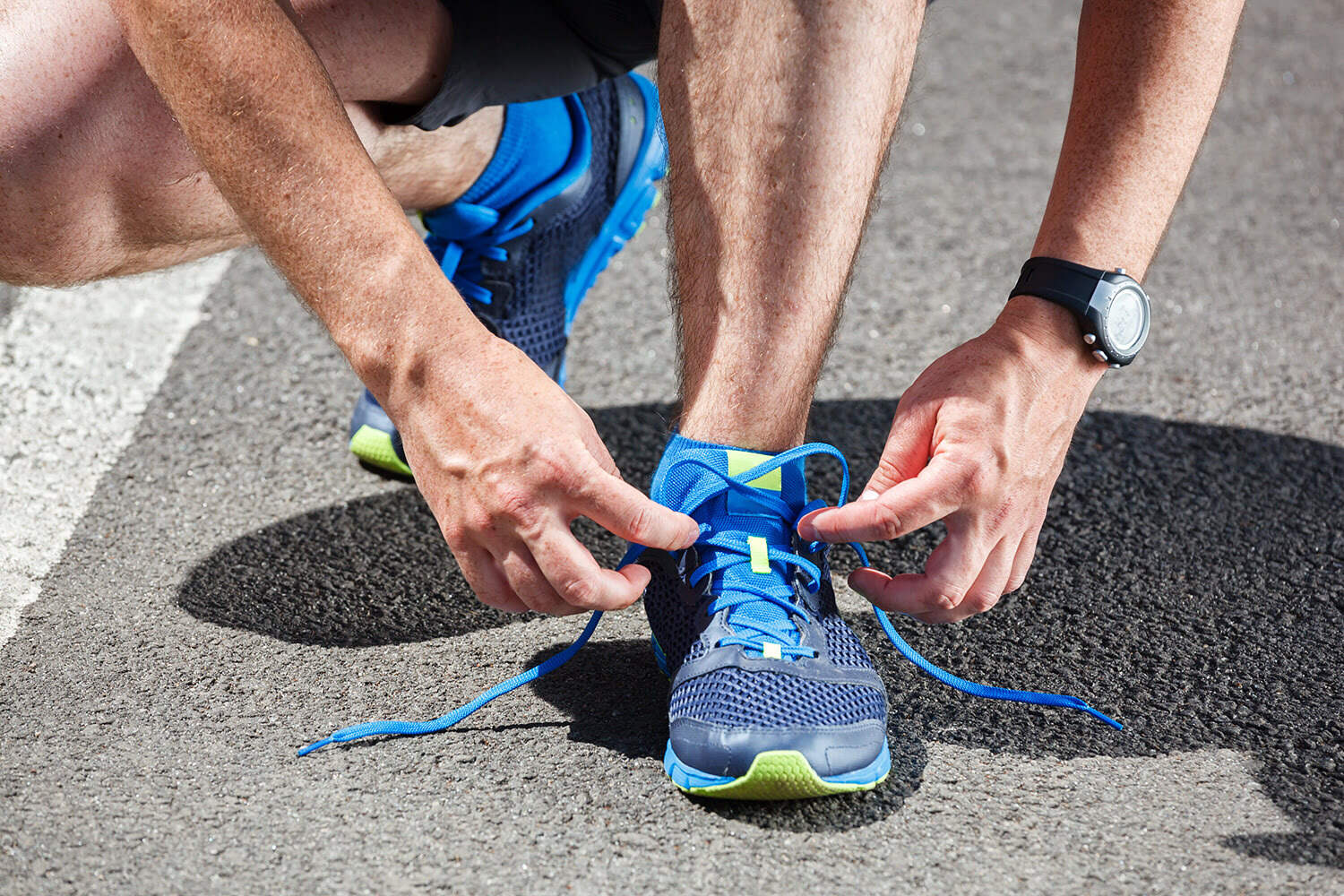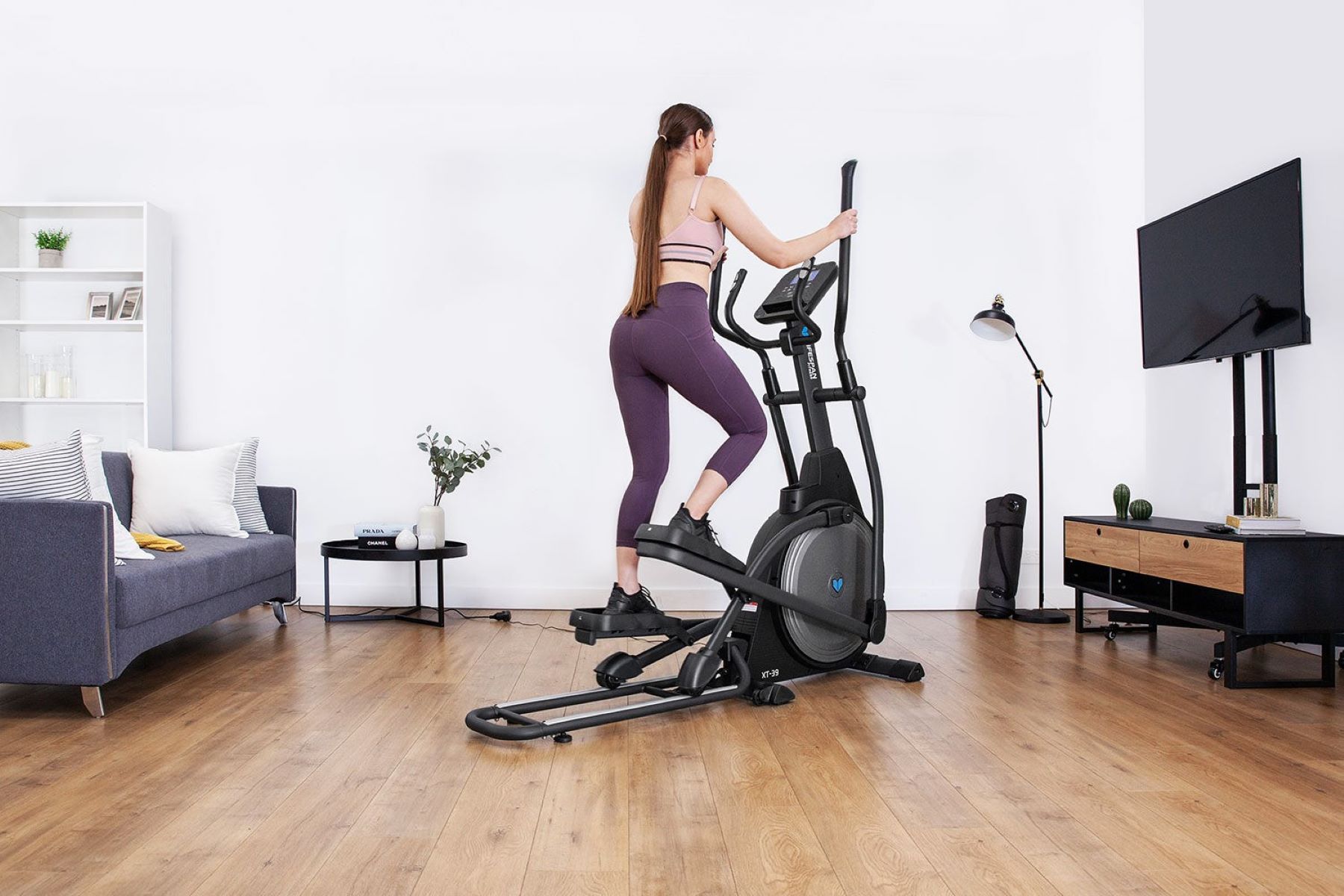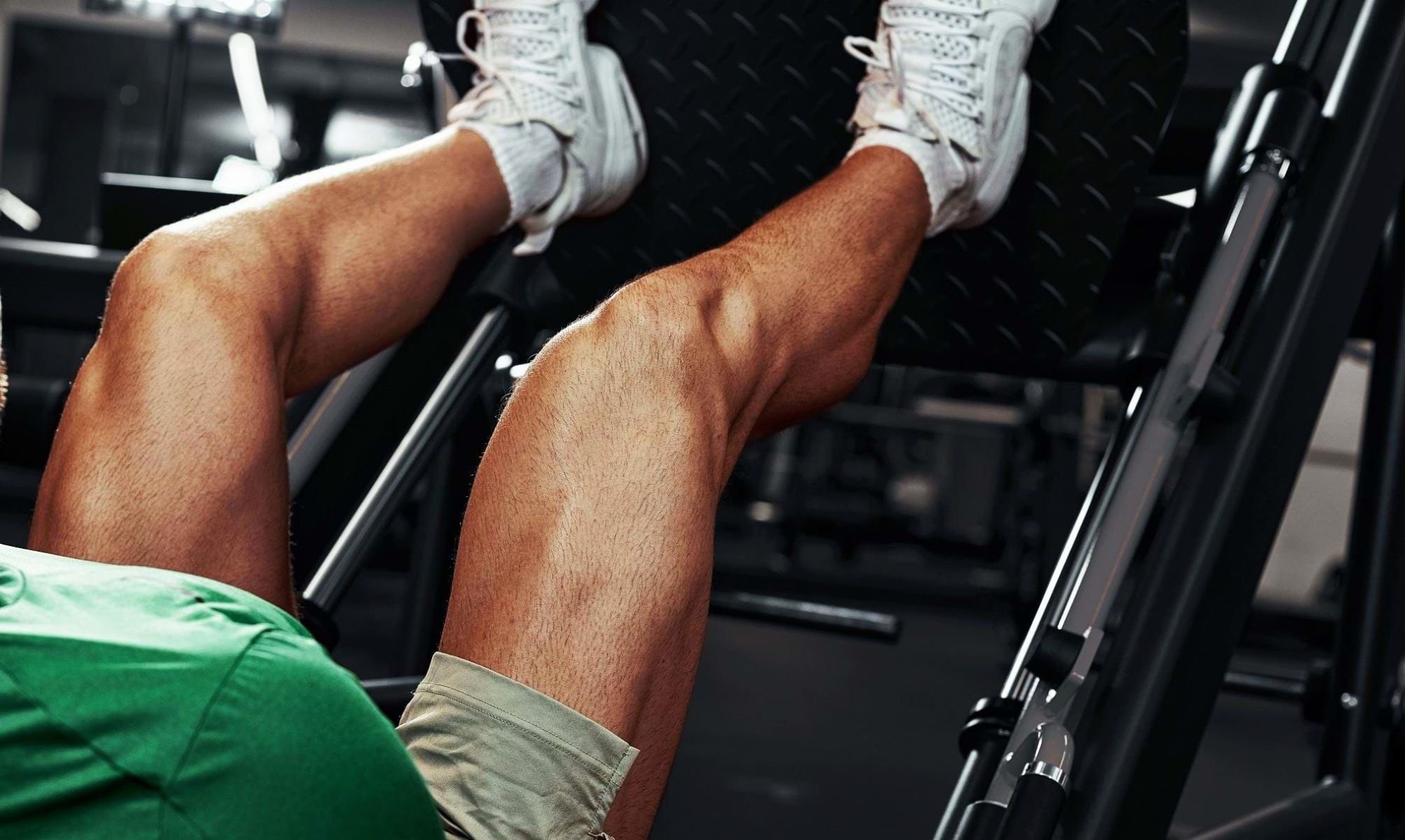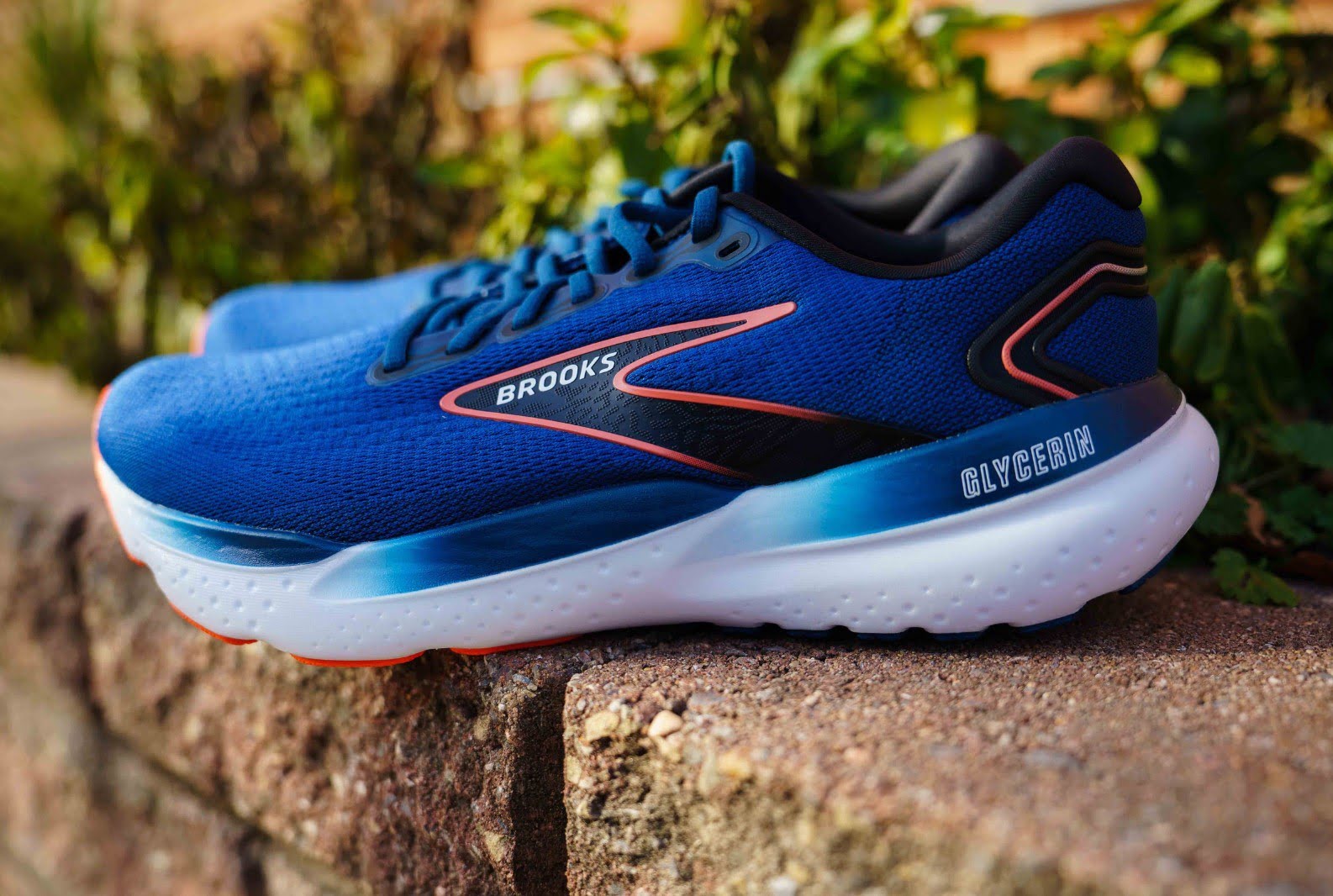Home>Training & Techniques>Top 5 Core Exercises For Elite Runners


Training & Techniques
Top 5 Core Exercises For Elite Runners
Published: March 5, 2024
Enhance your running performance with these top 5 core exercises. Learn essential training and techniques for elite runners. Achieve peak performance and prevent injuries.
(Many of the links in this article redirect to a specific reviewed product. Your purchase of these products through affiliate links helps to generate commission for Therunningadvisor.com, at no extra cost. Learn more)
Table of Contents
Introduction
Elite runners are known for their exceptional speed, endurance, and agility. Behind their remarkable performance lies a crucial yet often overlooked aspect of their training regimen: core strength. The core, which encompasses the muscles in the abdomen, lower back, pelvis, and hips, plays a pivotal role in a runner's ability to maintain proper form, generate power, and prevent injuries.
In this article, we will delve into the significance of core strength for elite runners and explore five highly effective core exercises that can elevate their performance to new heights. Whether you're a seasoned marathoner or a budding sprinter, incorporating these exercises into your training routine can lead to substantial improvements in your running prowess.
Stay tuned as we uncover the secrets to unlocking your full running potential through targeted core exercises that will enhance your stability, endurance, and overall athletic performance.
The Importance of Core Strength for Elite Runners
Elite runners rely on their core strength to propel them to victory. The core muscles, including the rectus abdominis, obliques, transverse abdominis, and erector spinae, form the powerhouse that stabilizes the body and facilitates efficient movement. For elite runners, a strong and stable core is not just a desirable attribute; it is a non-negotiable necessity that can make the difference between triumph and defeat.
Core strength is the foundation of a runner's stability and balance. As the body moves through the repetitive motion of running, the core muscles act as a stabilizing force, preventing excessive swaying and maintaining proper alignment. This stability is essential for efficient energy transfer and optimal running mechanics, allowing elite runners to maintain their speed and form over long distances.
Furthermore, core strength is integral to generating power and propulsion. When the core muscles are engaged and robust, they provide a solid base for the legs to push off from, resulting in more forceful strides and increased speed. This enhanced power output can be the differentiating factor in a close race, enabling elite runners to surge ahead with each step.
In addition to stability and power, core strength plays a pivotal role in injury prevention for elite runners. A strong core provides support for the spine and pelvis, reducing the risk of overuse injuries and promoting proper alignment during high-impact activities. By fortifying the core, elite runners can mitigate the strain on their lower back and lower extremities, thereby minimizing the likelihood of debilitating injuries that could sideline their training and competition schedules.
Moreover, a well-developed core contributes to improved endurance and efficiency. By maintaining a stable and engaged core throughout a run, elite runners can conserve energy and reduce wasted motion, leading to greater efficiency in their movement patterns. This efficiency translates to enhanced endurance, allowing runners to sustain their pace for longer durations without succumbing to fatigue or compromised form.
In essence, core strength is the cornerstone of an elite runner's performance. It underpins their stability, power, injury resilience, and endurance, making it an indispensable component of their training regimen. By prioritizing core-focused exercises and incorporating them into their training routine, elite runners can unlock their full potential and elevate their running prowess to unprecedented levels.
Exercise 1: Plank Variations
Planks are renowned for their unparalleled ability to target multiple muscle groups simultaneously, making them a staple in core strengthening routines for elite runners. By incorporating various plank variations into their training regimen, runners can effectively engage the entire core, including the rectus abdominis, transverse abdominis, obliques, and erector spinae, leading to enhanced stability, endurance, and overall performance.
Standard Plank
The standard plank is a fundamental exercise that forms the basis for more advanced variations. To perform a standard plank, assume a push-up position with your weight supported by your forearms and toes, ensuring that your body forms a straight line from head to heels. Engage your core muscles and hold this position for a predetermined duration, typically starting with 30 seconds and gradually increasing the time as your strength improves.
Side Plank
Side planks are instrumental in targeting the oblique muscles, which play a crucial role in stabilizing the body during running movements. To execute a side plank, lie on your side and prop yourself up on one forearm, keeping your body in a straight line and supporting your weight on the side of your foot. Engage your core and hold this position, ensuring that your hips remain lifted and your body forms a straight line from head to heels.
Read more: Top 4 Balance Exercises For Runners
Reverse Plank
The reverse plank is a dynamic variation that places emphasis on the posterior chain, including the lower back, glutes, and hamstrings. To perform a reverse plank, sit on the floor with your legs extended in front of you and your hands placed behind your hips. Lift your hips off the ground, creating a straight line from head to heels, and engage your core and glutes to maintain this position.
Dynamic Plank
Dynamic plank variations, such as plank jacks and plank hip dips, introduce movement into the traditional plank position, challenging the core muscles in a dynamic and functional manner. These dynamic exercises not only enhance core strength but also improve coordination and stability, which are essential for elite runners navigating varied terrains and demanding race conditions.
Incorporating a combination of these plank variations into a comprehensive core workout routine can yield substantial benefits for elite runners, including improved posture, enhanced muscular endurance, and a heightened ability to maintain proper form during the rigors of long-distance running. By prioritizing plank exercises and progressively advancing to more challenging variations, runners can fortify their core and unleash their full potential on the track or trail.
Exercise 2: Russian Twists
Russian twists are a dynamic core exercise that targets the obliques, transverse abdominis, and hip flexors, making them a valuable addition to the core training repertoire of elite runners. This exercise not only strengthens the rotational muscles essential for maintaining stability and balance during running but also enhances overall core endurance and resilience.
To perform Russian twists, begin by sitting on the floor with your knees bent and feet elevated slightly off the ground. Engage your core to stabilize your torso as you lean back at a 45-degree angle, ensuring a straight back and neutral spine. Clasp your hands together or hold a weight to add resistance, and then proceed to rotate your torso to the left, bringing the clasped hands or weight in line with the floor. Return to the center and then rotate to the right, repeating this twisting motion in a controlled manner.
The rotational nature of Russian twists closely mimics the torso movements involved in running, making it a highly functional exercise for elite runners. By strengthening the obliques and transverse abdominis, runners can improve their ability to maintain proper form and stability, especially when navigating sharp turns or uneven terrain during races.
Moreover, Russian twists contribute to enhanced core endurance, which is crucial for sustaining optimal running mechanics over long distances. As the obliques and transverse abdominis are engaged in the twisting motion, they develop the resilience necessary to withstand the repetitive demands of running, thereby reducing the likelihood of fatigue-induced form deterioration.
Adding resistance, such as a medicine ball or dumbbell, to the Russian twist exercise can further intensify the challenge, leading to greater strength gains and improved muscular coordination. The incorporation of resistance also promotes the development of functional strength, which directly translates to more powerful and efficient running strides.
Incorporating Russian twists into a comprehensive core training regimen can yield significant benefits for elite runners, including enhanced rotational stability, improved core endurance, and a reduced risk of injury stemming from muscular imbalances. By consistently integrating Russian twists into their training routine, elite runners can fortify their core and elevate their running performance to new heights, ultimately gaining a competitive edge in their pursuit of athletic excellence.
Exercise 3: Dead Bug
The Dead Bug exercise is a highly effective core strengthening movement that targets the deep stabilizing muscles of the core, including the transverse abdominis and the pelvic floor muscles. Despite its seemingly whimsical name, the Dead Bug exercise offers a myriad of benefits for elite runners, making it a valuable addition to their training regimen.
To perform the Dead Bug exercise, begin by lying on your back with your arms extended toward the ceiling and your legs lifted, forming a 90-degree angle at the hips and knees. Engage your core muscles to press your lower back into the floor, ensuring stability and alignment. From this position, slowly and deliberately lower one arm behind your head while simultaneously extending the opposite leg toward the ground. Return to the starting position and repeat the movement on the opposite side, alternating between arms and legs in a controlled manner.
The Dead Bug exercise is particularly effective in enhancing core stability and coordination, as it requires the engagement of opposing limbs while maintaining a stable and neutral spine. By challenging the core muscles to resist movement and maintain control throughout the exercise, elite runners can develop the precise muscular control necessary for optimal running mechanics and injury prevention.
Furthermore, the Dead Bug exercise promotes the activation of the transverse abdominis, a deep-lying muscle that acts as a natural corset, providing essential support for the spine and pelvis. Strengthening the transverse abdominis through the Dead Bug exercise can contribute to improved posture, reduced risk of lower back pain, and enhanced overall core strength, all of which are invaluable assets for elite runners seeking to maximize their performance.
In addition to its core-strengthening benefits, the Dead Bug exercise fosters improved mind-muscle connection, as it requires focused concentration to execute the movement with precision and control. This heightened awareness of core engagement and stability can translate to more efficient running mechanics, allowing elite runners to harness the power of their core muscles to propel them forward with greater force and agility.
Incorporating the Dead Bug exercise into a comprehensive core training routine can yield substantial dividends for elite runners, including enhanced core stability, improved muscular coordination, and a reduced risk of injury stemming from instability or weakness. By embracing the Dead Bug exercise as a foundational component of their training regimen, elite runners can fortify their core and elevate their running performance to new heights, setting the stage for unparalleled athletic achievements.
Read more: Top Resistance Band Exercises For Runners
Exercise 4: Mountain Climbers
Mountain climbers are a dynamic and high-intensity core exercise that not only targets the abdominal muscles but also engages the upper body, lower body, and cardiovascular system, making it a multifaceted movement that delivers comprehensive fitness benefits. This exercise, which mimics the motion of climbing a steep incline, is a favorite among elite runners due to its ability to enhance core strength, cardiovascular endurance, and overall athleticism.
To perform mountain climbers, start in a plank position with your hands positioned directly under your shoulders and your body forming a straight line from head to heels. Engage your core muscles to stabilize your torso as you drive one knee toward your chest, then swiftly switch legs, bringing the opposite knee forward while extending the other leg back. Alternate the leg movements in a rapid and fluid manner, maintaining a steady pace and focusing on maintaining proper form throughout the exercise.
Mountain climbers are renowned for their capacity to elevate the heart rate and challenge the cardiovascular system, effectively transforming them into a dynamic full-body workout. As elite runners strive to optimize their cardiovascular endurance and stamina, integrating mountain climbers into their training regimen can serve as a potent tool for enhancing their overall fitness and conditioning, ultimately contributing to improved race performance and sustained endurance.
From a core strengthening perspective, mountain climbers place significant emphasis on the rectus abdominis, obliques, and transverse abdominis, as these muscles are engaged to stabilize the body and facilitate the rapid leg movements. The dynamic nature of mountain climbers demands core stability and strength, making it an invaluable exercise for fortifying the abdominal muscles and enhancing overall stability during running.
Moreover, mountain climbers foster enhanced coordination and agility, as the synchronized leg movements require precise control and muscular coordination. Elite runners can benefit from the improved neuromuscular coordination developed through mountain climbers, translating to more efficient and fluid running mechanics, especially when navigating challenging terrain or executing quick directional changes during races.
Incorporating mountain climbers into a comprehensive core training routine can yield substantial dividends for elite runners, including improved cardiovascular endurance, enhanced core strength, and heightened agility. By embracing mountain climbers as a dynamic and multifaceted exercise, elite runners can elevate their overall athleticism and running performance, setting the stage for unparalleled achievements on the track, trail, or road.
Exercise 5: Bicycle Crunches
Bicycle crunches are a dynamic and effective core exercise that targets the rectus abdominis, obliques, and hip flexors, making them a valuable addition to the core training regimen of elite runners. This exercise, characterized by its fluid and rhythmic motion, not only strengthens the abdominal muscles but also enhances overall core endurance and functional stability, essential for the demands of high-performance running.
To perform bicycle crunches, begin by lying on your back with your hands placed lightly behind your head, elbows pointing outward. Lift your legs off the ground and assume a tabletop position, ensuring a 90-degree angle at the hips and knees. From this starting position, initiate the movement by bringing one knee toward your chest while simultaneously rotating your torso to bring the opposite elbow toward the knee. As you extend one leg outward, switch sides by bringing the opposite knee toward your chest and rotating your torso to meet it with the corresponding elbow in a fluid and continuous motion.
The alternating and twisting motion of bicycle crunches closely mimics the coordinated movements involved in running, making it a highly functional exercise for elite runners. By engaging the rectus abdominis and obliques in a dynamic and rhythmic manner, runners can develop the rotational stability and muscular endurance necessary for maintaining proper form and balance during the varying demands of running, including sharp turns and undulating terrain.
Furthermore, bicycle crunches promote the activation of the hip flexors, which play a crucial role in stabilizing the pelvis and supporting the lower body during running movements. Strengthening the hip flexors through bicycle crunches can contribute to improved stride efficiency and reduced risk of hip-related injuries, ultimately enhancing the overall biomechanics of elite runners.
In addition to its core-strengthening benefits, bicycle crunches foster improved coordination and mind-muscle connection, as the synchronized movements require precise control and engagement of multiple muscle groups. This heightened awareness of muscular coordination can translate to more efficient running mechanics, allowing elite runners to harness the power of their core and hip flexor muscles to propel them forward with greater force and agility.
Incorporating bicycle crunches into a comprehensive core training routine can yield substantial benefits for elite runners, including enhanced rotational stability, improved core endurance, and reduced risk of injury stemming from muscular imbalances. By consistently integrating bicycle crunches into their training regimen, elite runners can fortify their core and elevate their running performance to new heights, ultimately gaining a competitive edge in their pursuit of athletic excellence.
Conclusion
In conclusion, the significance of core strength for elite runners cannot be overstated. The core serves as the linchpin of their athletic prowess, influencing their stability, power, endurance, and injury resilience. By prioritizing targeted core exercises, elite runners can fortify their foundational strength, leading to enhanced performance and a reduced risk of debilitating injuries.
The core exercises highlighted in this article, including plank variations, Russian twists, dead bugs, mountain climbers, and bicycle crunches, offer a comprehensive approach to strengthening the core muscles essential for running. These exercises not only target the superficial abdominal muscles but also engage the deeper stabilizing muscles, fostering a holistic and functional core strength that directly translates to improved running mechanics and overall athletic performance.
By incorporating these core exercises into their training regimen, elite runners can expect to experience a myriad of benefits. From enhanced stability and power generation to improved endurance and injury prevention, the impact of a strong core reverberates throughout every aspect of their running journey. Furthermore, the functional nature of these exercises ensures that the core strength gained directly translates to the dynamic demands of running, allowing elite runners to navigate varied terrains and race conditions with confidence and efficiency.
It is imperative for elite runners to recognize the pivotal role of core strength in their pursuit of athletic excellence. By embracing a holistic approach to training that encompasses targeted core exercises, runners can unlock their full potential, surging ahead with enhanced stability, power, and resilience. As they strive to conquer new milestones and achieve peak performance, a strong and resilient core stands as their unwavering foundation, propelling them toward unparalleled success on the track, trail, or road.

